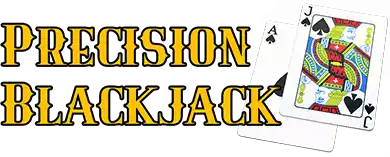Mastering the Art of the Soft 17: A Key to Blackjack Success
Mastering the Art of the Soft 17: A Key to Blackjack Success
The Complexity of the Soft 17
If you’ve spent any time playing blackjack, you’ve likely encountered the term “soft 17.” It’s a hand that can be both an opportunity and a challenge, depending on how well you understand its dynamics. While it might seem like just another hand at first glance, soft 17 plays a significant role in your overall strategy and can greatly impact your success at the blackjack table.
In this article, we’ll delve into the intricacies of soft 17, exploring what it is, how it differs from other hands, and most importantly, how to play it effectively. By the end, you’ll be equipped with the knowledge to make the best decisions when faced with a soft 17, helping you improve your game and increase your chances of winning.
What is a Soft 17?
Before we get into strategy, let’s define what a soft 17 actually is.
Understanding Soft Hands
In blackjack, a “soft” hand is any hand that includes an Ace counted as 11 points. This is in contrast to a “hard” hand, where the Ace must be counted as 1 point because counting it as 11 would cause the hand to exceed 21 and bust.
A soft 17, therefore, is a hand that totals 17 points with an Ace counted as 11. For example, Ace-6 is a soft 17. The key characteristic of a soft hand is its flexibility: because the Ace can be counted as either 1 or 11, you have more options for how to play the hand.
The Significance of Soft 17
Soft 17 is a unique and pivotal hand in blackjack, and understanding how to play it correctly can make a big difference in your overall performance.
Why Soft 17 Matters
Soft 17 is significant for several reasons:
- Flexibility: The ability to count the Ace as either 1 or 11 gives you more options and reduces the risk of busting if you hit.
- Dealer Rules: Many blackjack games require the dealer to hit on a soft 17, while others require the dealer to stand. This rule variation has a direct impact on the house edge and should influence your strategy.
- Player Strategy: Knowing how to play soft 17 effectively can help you turn a potentially mediocre hand into a winner.

Dealer Rules on Soft 17: Hit or Stand?
One of the first things to consider when you’re playing blackjack is the rule that dictates how the dealer must play a soft 17. This rule can vary from one casino to another, and it’s crucial to know which version you’re up against.
Dealer Hits on Soft 17
In some blackjack games, the dealer is required to hit on a soft 17. This rule generally increases the house edge slightly, because it gives the dealer an additional chance to improve their hand.
- Impact on House Edge: When the dealer hits on soft 17, the house edge increases by about 0.2%. This might seem small, but it can add up over time, making the game more challenging for the player.
Dealer Stands on Soft 17
In other games, the dealer is required to stand on a soft 17. This rule is more favorable to players, as it limits the dealer’s ability to improve their hand.
- Impact on House Edge: When the dealer stands on soft 17, the house edge is slightly lower. This rule variation is preferable for players and should influence your decision on which table to play at.
How to Play a Soft 17: Strategic Guidelines
Now that we’ve covered the basics, let’s get into the strategy of playing a soft 17. Whether you’re playing against a dealer who hits or stands on soft 17, your approach to this hand should be carefully considered.
- When to Hit
One of the key decisions you’ll face with a soft 17 is whether to hit or stand. In most cases, hitting is the best option, especially when the dealer shows a strong upcard.
- Against a Strong Dealer Upcard (7 or Higher): If the dealer shows a 7, 8, 9, 10, or Ace, you’re at a disadvantage with a soft 17. In these cases, it’s generally better to hit and try to improve your hand. The risk of busting is low, thanks to the flexibility of the Ace, and you might end up with a stronger hand that can compete with the dealer’s likely strong total.
- When to Double Down
Doubling down is an aggressive move that can pay off big if done correctly. With a soft 17, doubling down is often a smart play, particularly when the dealer shows a weak upcard.
- Against a Weak Dealer Upcard (3-6): If the dealer’s upcard is 3 through 6, they are more likely to bust. This is an ideal scenario for doubling down on your soft 17. By doubling your bet, you take advantage of the dealer’s vulnerability, maximizing your potential winnings.
- When to Stand
While standing on a soft 17 is generally not advisable, there are specific situations where it might be the right move.
- Against a Very Weak Dealer Upcard (2): If the dealer shows a 2, standing on a soft 17 can sometimes be the best play, particularly if you’re playing conservatively or if doubling down is not an option. However, hitting or doubling down is usually still preferable.

Common Mistakes with Soft 17 (And How to Avoid Them)
Even experienced players can make mistakes when dealing with a soft 17. Here are some common errors to watch out for, along with tips on how to avoid them.
- Always Standing on Soft 17
Some players treat a soft 17 as if it were a hard 17, automatically standing without considering other options. This is a mistake that can cost you money.
- How to Avoid: Remember that a soft 17 is not the same as a hard 17. Take advantage of the flexibility that the Ace provides, and consider hitting or doubling down instead of automatically standing.
- Overlooking the Dealer’s Upcard
Your strategy for playing a soft 17 should be heavily influenced by the dealer’s upcard. Ignoring this crucial piece of information can lead to poor decisions.
- How to Avoid: Always assess the dealer’s upcard before making your move. Use the dealer’s card to guide your decision on whether to hit, stand, or double down.
- Misjudging Doubling Down Opportunities
Doubling down on a soft 17 can be a powerful move, but it’s important to choose the right moments. Some players either shy away from doubling down altogether or overuse it, leading to unnecessary losses.
- How to Avoid: Reserve doubling down for situations where the dealer shows a weak upcard (3-6), and you have a good chance of turning your soft 17 into a winning hand.
Practical Tips for Playing Soft 17
Mastering the soft 17 requires practice, patience, and a strategic mindset. Here are some practical tips to help you improve your play:
- Practice with a Strategy Chart
If you’re new to blackjack or still getting comfortable with the strategy, consider using a basic strategy chart that includes guidelines for playing soft hands. Practice regularly with the chart until you’re confident in your decision-making.
- Observe the Dealer’s Rules
Before you sit down at a blackjack table, check the rules to see whether the dealer hits or stands on soft 17. This information will help you adjust your strategy accordingly and choose the best tables to play at.
- Stay Flexible
Remember that a soft hand is called “soft” for a reason—it’s flexible. Don’t get locked into a rigid mindset when playing soft 17. Assess the situation, consider your options, and make the move that gives you the best chance of winning.
Conclusion: Mastering Soft 17 for Better Blackjack Play
The soft 17 is a pivotal hand in blackjack, offering both challenges and opportunities. By understanding how to play this hand strategically, you can make better decisions at the table and increase your chances of walking away a winner.
Whether you’re hitting, standing, or doubling down, the key is to stay informed and adaptable. Keep the dealer’s rules and upcard in mind, and use the flexibility of the Ace to your advantage. With practice and experience, you’ll master the art of the soft 17 and elevate your blackjack game to new heights.
Good luck at the tables, and may your soft 17s lead to big wins!

